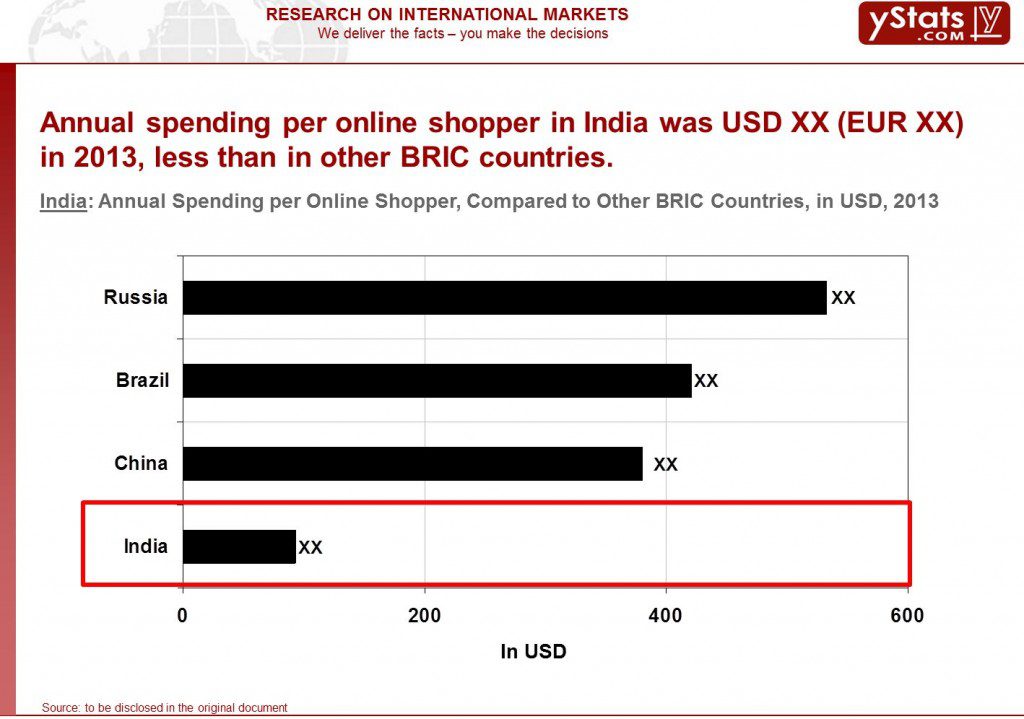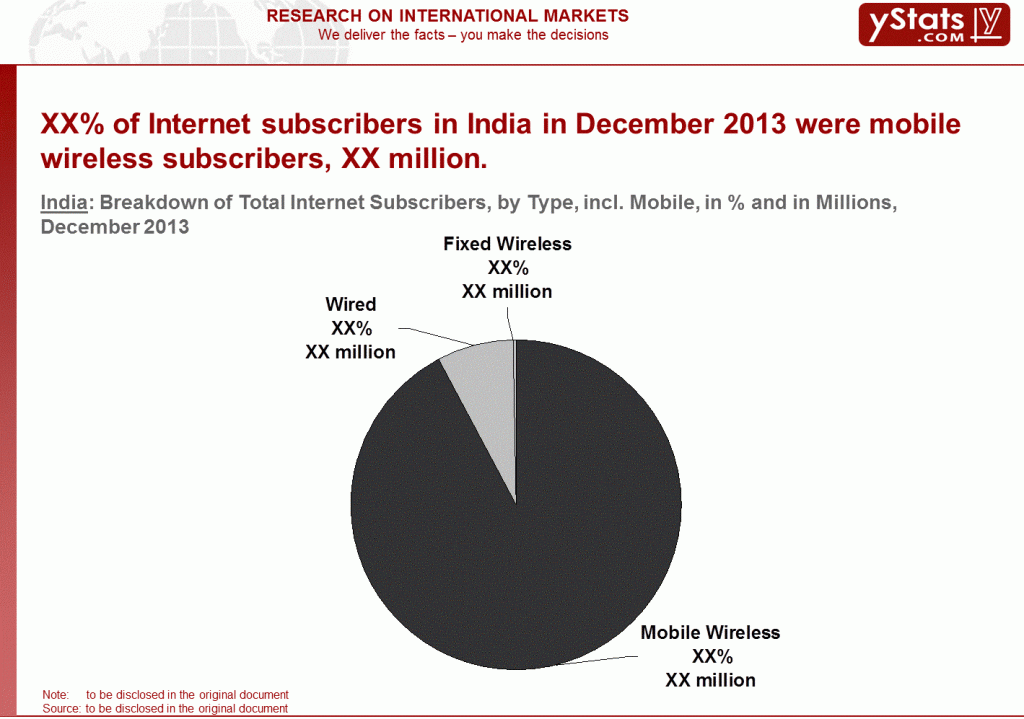A new publication of Hamburg-based secondary research organization yStats.com, “India B2C E-Commerce Market 2014”, reports that India’s online retail scene is one of the fastest growing in the world. Its large population base along with the growing internet and smartphone penetration contribute to the nation having the fourth highest B2C E-Commerce growth rate in the world. India’s M-Commerce prospects are particularly bright.
Although India had the smallest B2C E-Commerce market size and spending per online shopper of the BRIC countries last year, the country is a leader in Internet connectivity growth, particularly through mobile devices. Mobile shopper penetration in India tops many other countries, ranking third among emerging markets and fourth among Asia-Pacific countries. Some online merchants report double-digit mobile traffic shares. Over 90% of several hundred million Internet subscriptions registered by the end of 2013 were mobile.
Even with new connections through mobile, Internet user penetration on the 1.2 billion population in India remained below 20% in 2013, though tripling the 2009 rate. With continued high growth, the number of internet users in India could reach several hundred million in the next 3 years, and the number of online shoppers is forecasted to double in that time. Because of this increase in Internet penetration B2C E-Commerce sales in India have shown double-digit growth rates in recent years, placing the country fourth world-wide in sales growth. Continued growth at above 50% average annual rate is forecasted for the next several years.
Payment and delivery systems are a challenge for online retail in India. The share of “Cash on Delivery” on B2C E-Commerce payments in India is forecasted to decrease but remain dominant, while third-party wallets are expected to show the fastest growth. B2C E-Commerce delivery in India is challenged by poor logistics infrastructure. However, large online merchants managed to launch same day delivery to the cities in 2013.
Some observers suggest that government regulation of foreign players has been a barrier to B2C E-Commerce growth. Early this year the Indian government initiated discussions on changing the restrictions laid on foreign direct investment in B2C E-Commerce. Under the current regulations, foreign retailers cannot sell their own merchandise online and are limited to offering B2B E-Commerce services, such as operating online marketplaces. In spite of these restrictions, competition between the two largest online marketplaces in India, Snapdeal and Flipkart, was joined in 2013 by the marketplace created by Amazon India, which also launched a marketplace. Snapdeal and Flikart benefited from large venture capital investments in early 2014, while Amazon continues to lobby for change of the FDI rule so that it can sell its own merchandise in India. Ebay increased its investments in Snapdeal in 2014, while also recording over 2 million users on its own marketplace. Popular online fashion store Myntra was acquired by Flipkart in 2014, while online and home shopping company Homeshop18 filed for an IPO on Nasdaq, all of which points to continued confidence in growth of B2C E-Commerce in the country.




